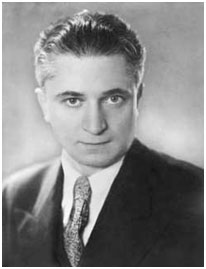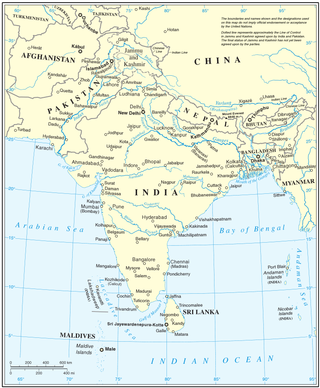Related Research Articles

Japheth is one of the three sons of Noah in the Book of Genesis, in which he plays a role in the story of Noah's drunkenness and the curse of Ham, and subsequently in the Table of Nations as the ancestor of the peoples of the Aegean Sea, Anatolia, and elsewhere. In medieval and early modern European tradition he was considered to be the progenitor of the European peoples, while Islamic traditions also include the Chinese people among his descendants.

Fernand Braudel was a French historian and leader of the Annales School. His scholarship focused on three main projects: The Mediterranean, Civilization and Capitalism (1955–79), and the unfinished Identity of France (1970–85). He was a member of the Annales School of French historiography and social history in the 1950s and 1960s. He was a student of Henri Hauser.

Timur Kuran is a Turkish-American economist and political scientist, Professor of Economics and Political Science, and Gorter Family Professor of Islamic Studies at Duke University. His work spans economics, political science, history, and law.
Thomas Schaub Noonan was an American historian, Slavicist and anthropologist who specialized in early Russian history and Eurasian nomad cultures.
Caste systems in Africa are a form of social stratification found in numerous ethnic groups, found in over fifteen countries, particularly in the Sahel, West Africa, and North Africa. These caste systems feature endogamy, hierarchical status, inherited occupation, membership by birth, pollution concepts and restraints on commensality.

Education in the Indian subcontinent began with teaching of traditional elements such as Indian religions, Indian mathematics, Indian logic at early Hindu and Buddhist centres of learning such as ancient Takshashila and Nalanda. Islamic education became ingrained with the establishment of Islamic empires in the Indian subcontinent in the Middle Ages while the coming of the Europeans later brought western education to colonial India.

The history of nudity involves social attitudes to nakedness of the human body in different cultures in history. The use of clothing to cover the body is one of the changes that mark the end of the Neolithic, and the beginning of civilizations. Nudity has traditionally been the social norm for both men and women in hunter-gatherer cultures in warm climates, and it is still common among many indigenous peoples. The need to cover the body is associated with human migration out of the tropics into climates where clothes were needed as protection from sun, heat, and dust in the Middle East; or from cold and rain in Europe and Asia. The first use of animal skins and cloth may have been as adornment, along with body modification, body painting, and jewelry, invented first for other purposes, such as magic, decoration, cult, or prestige. The skills used in their making were later found to be practical as well.

Albanian folk beliefs comprise the beliefs expressed in the customs, rituals, myths, legends and tales of the Albanian people. The elements of Albanian mythology are of Paleo-Balkanic origin and almost all of them are pagan. Albanian folklore evolved over the centuries in a relatively isolated tribal culture and society. Albanian folk tales and legends have been orally transmitted down the generations and are still very much alive in the mountainous regions of Albania, Kosovo, western North Macedonia, ex-Albanian lands of Montenegro, and southern Serbia, and among the Arbëreshë in Italy and the Arvanites in Greece.
Paleontology or palaeontology is the study of prehistoric life forms on Earth through the examination of plant and animal fossils. This includes the study of body fossils, tracks (ichnites), burrows, cast-off parts, fossilised feces (coprolites), palynomorphs and chemical residues. Because humans have encountered fossils for millennia, paleontology has a long history both before and after becoming formalized as a science. This article records significant discoveries and events related to paleontology that occurred or were published in the year 1977.
Michael Davitt was an Irish poet who published in the Irish language. He has been characterised as "...one of modern Ireland's finest poets in either of the nation's languages and key figure in the 1970s Irish Language poetry movement.
Dubhghall mac Suibhne was a Scottish landholder in Argyll, and a leading member of Clann Suibhne. He was a son of Suibhne mac Duinn Shléibhe, and appears to have held lordship of Knapdale from at least the 1240s to the 1260s, and may have initiated the construction of Skipness Castle and Lochranza Castle.
Although Old Chinese is known from written records beginning around 1200 BC, the logographic script provides much more indirect and partial information about the pronunciation of the language than alphabetic systems used elsewhere. Several authors have produced reconstructions of Old Chinese phonology, beginning with the Swedish sinologist Bernard Karlgren in the 1940s and continuing to the present day. The method introduced by Karlgren is unique, comparing categories implied by ancient rhyming practice and the structure of Chinese characters with descriptions in medieval rhyme dictionaries, though more recent approaches have also incorporated other kinds of evidence.
Reuven Firestone is an American academic and historian of religion, who serves as the Regenstein Professor in Medieval Judaism and Islam at the Hebrew Union College-Jewish Institute of Religion's Skirball Campus in Los Angeles and Affiliate Professor of Religion at the University of Southern California.

Islam is the second-largest religion in South Asia, with more than 600 million Muslims living there, forming about one-third of the region's population. History of Islam in South Asia started along the coastal regions of the Indian subcontinent and Sri Lanka, almost as soon as it started in the Arabian Peninsula, as the Arab traders brought it to South Asia. South Asia has the largest population of Muslims in the world, with about one-third of all Muslims living here. Islam is the dominant religion in half of the South Asian countries. It is the second largest religion in India and third largest in Sri Lanka and Nepal.
Knut Sigurdson Vikør is a Norwegian historian and a professor of history at the University of Bergen. He is known for his studies on the history of Islam and Islamic law.
Istanbul became one of the world’s most important Jewish centers in the 16th and 17th centuries. In marked contrast to Jews in Europe, Ottoman Jews were allowed to work in any profession and could also enter the Ottoman court. Ottoman Jews in Istanbul excelled in commerce, trade and came to particularly dominate the medical profession. Despite making up only 10% of the city population, Ottoman Jews constituted 62% of licensed doctors in 1600.
André Wink is an emeritus professor of history at University of Wisconsin, Madison. He is known for his studies on India and the Indian Ocean area, particularly over the medieval and early modern age. He is the author of a series of books published by Brill Academic, Oxford University Press, and Cambridge University Press on al-Hind – a term used in Arab history to refer to the Islamized regions in the Indian subcontinent and nearby regions.
In traditionalist philosophy, pontifical man is a divine representative who serves as a bridge between heaven and earth. Promethean man, on the other hand, sees himself as an earthly being who has rebelled against God and has no knowledge of his origins or purposes. This concept was notably developed in contemporary language by the Iranian philosopher Seyyed Hossein Nasr.
A Young Muslim's Guide to the Modern World is a 1993 book by the Iranian philosopher Seyyed Hossein Nasr.
References
- ↑ Naqvi 1990, pp. 331–333.
- ↑ Eaton 1987, pp. 131.
- ↑ Troll 1990, pp. 253–255.
- ↑ Hamès 1992, pp. 282–282.
- ↑ Minault 1988, pp. 130–131.